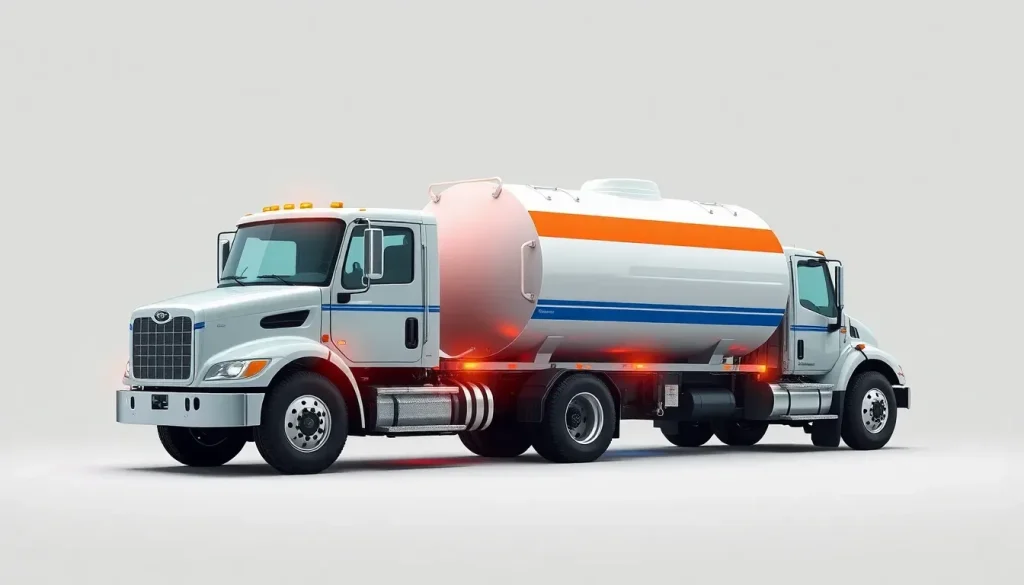Propane Autogas Work Trucks Refueling Options

As the world moves towards more sustainable energy sources, propane autogas has emerged as a viable alternative fuel for various applications, particularly in work trucks and school buses. Its growing popularity is primarily due to significant economic advantages and environmental benefits, making it a compelling choice for fleet operators. Understanding the nuances of refueling options, safety measures, and the broader implications of using propane autogas is essential for businesses looking to make the switch.
This article delves into the many facets of propane autogas, including its economic and emissions benefits, refueling options, safety considerations, and technical details surrounding the use of propane in work trucks. Whether you're an operator, fleet manager, or simply interested in alternative fuels, this comprehensive guide will provide valuable insights.
- The economic and emissions benefits of propane autogas
- Understanding refueling options for propane autogas
- Safety measures when refueling propane autogas
- What to know about filling a truck that runs on propane
- Is autogas the same as propane?
- Considerations for transporting propane tanks in truck beds
The economic and emissions benefits of propane autogas
Propane autogas is gaining traction not only for its practicality but also for its cost-effectiveness. Estimates indicate that propane can cost up to 50% less per gallon than diesel and approximately 40% less than gasoline. This substantial price difference is a crucial factor for fleet operators who strive to minimize operating costs without sacrificing performance.
Moreover, about 90% of propane used in the United States is produced domestically, contributing to a stable and reliable fuel supply. This reliability, combined with lower emissions compared to traditional fuels, makes propane an attractive option for fleets under pressure to improve sustainability.
- Reduced emissions: Propane burns cleaner than gasoline and diesel, producing fewer greenhouse gases and harmful pollutants.
- Energy independence: With a significant portion of propane sourced domestically, fleets can reduce reliance on imported fuels.
- Lower maintenance costs: Propane engines typically require less maintenance, leading to additional savings over time.
- Incentives and rebates: Many governments offer tax incentives and rebates for businesses that transition to alternative fuels, further reducing costs.
Understanding refueling options for propane autogas
Refueling options for propane autogas are versatile and can be tailored to meet the specific needs of a fleet. Operators can choose from several methods, including:
- Permanent on-site stations: Installing a dedicated refueling station at your facility provides convenience and control over fuel availability.
- Temporary refueling stations: Ideal for short-term projects or seasonal demands, temporary stations can be set up quickly.
- Public fueling locations: Utilizing publicly accessible stations can be convenient, particularly in urban areas where infrastructure is already established.
When it comes to the actual refueling process, it is generally similar to that of gasoline or diesel. It includes automatic shut-off mechanisms that prevent overfilling by stopping the flow of fuel at 80% of tank capacity. This safety measure is critical for preventing spills and ensuring proper fueling practices.
To maintain safety standards, it is essential that drivers undergo training every three years, coupled with regular station maintenance conducted quarterly. These practices help ensure that the refueling process remains safe and efficient.
For a deeper understanding of the refueling process, you can refer to this primer created by Superior Energy Systems.
Safety measures when refueling propane autogas
Safety is paramount when dealing with any flammable fuel, including propane. Here are essential precautions to consider when refueling propane autogas vehicles:
- Proper training: Ensure that all personnel involved in the refueling process are adequately trained in safety protocols and emergency procedures.
- Regular inspections: Conduct routine checks on refueling equipment and tanks to identify any potential leaks or malfunctions.
- Ventilation: Ensure that the refueling area is well-ventilated to prevent the accumulation of gas in the event of a leak.
- Emergency response plan: Have a clear and accessible emergency response plan in case of accidents or incidents.
By implementing these safety measures, fleets can mitigate risks and create a safer working environment for their drivers and personnel.
What to know about filling a truck that runs on propane
Filling a truck that operates on propane is a relatively straightforward process but requires adherence to specific guidelines to ensure safety. Key points to remember include:
- Check for leaks: Before starting the refueling process, inspect the tank and connections for any signs of leaks.
- Use appropriate equipment: Ensure that the refueling nozzle is compatible with the truck's propane tank.
- Monitor the filling: Always supervise the refueling process to respond promptly to any issues that may arise.
Is autogas the same as propane?
Autogas is essentially a term used to describe propane when it is utilized as a fuel for vehicles. While both terms can be used interchangeably, "autogas" often refers specifically to propane used in the context of powering vehicles. This distinction is important as it highlights the growing acceptance of propane as a clean alternative fuel source for transportation.
Considerations for transporting propane tanks in truck beds
Transporting propane tanks in truck beds requires careful consideration of safety and compliance with regulations. Here are some vital guidelines:
- Secure the tank: Ensure that the tank is firmly secured in the truck bed to prevent movement during transit.
- Keep it upright: Propane tanks should always be transported in an upright position to prevent leaks and maintain safety.
- Ventilation: Ensure adequate ventilation in the truck bed to minimize the risk of gas buildup.
By adhering to these guidelines, you can safely transport propane tanks and avoid potential hazards.
For those looking to dive deeper into the technical aspects of propane refueling, check out this informative video that explains the fueling process in detail:




Leave a Reply